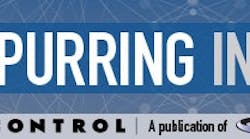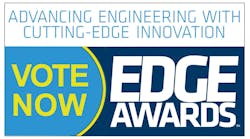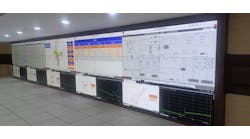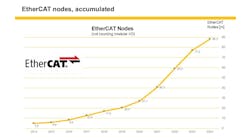On Tuesday evening, digital transformation was the topic of discussion for a panel that included Peter Zornio, chief strategic officer, Emerson Automation Solutions; Tom Madilao, regional manager, special projects, Chevron; Denise Sherrod, chief of automation, Occidental Oil and Gas; Robert Wojewodka, manager, global operations, statistics and data science, Lubrizol; Bilal Mehmood, vice president and chief technology officer, Kadant; and Carl Coken, general manager for IoT, Microsoft.
The Industrial Internet of Things (IIoT) has triggered arguably the biggest wave in the industrial sector in decades: digital transformation. The promises and potential are enormous, and game-changing technologies are hitting the street at a dizzying pace. But questions arise: How will organizations manage their own transformations? How will traditionally siloed organizations like IT and OT look in the future? How critical is IT/OT collaboration to make digital transformation a reality, and what does it look like?At the Emerson Global Users Exchange this week in San Antonio, those topics and more were discussed by an industry panel consisting of Tom Madilao, regional manager, special projects, Chevron; Denise Sherrod, chief of automation, Occidental Oil and Gas; Robert Wojewodka, manager, global operations, statistics and data science, Lubrizol; and Bilal Mehmood, vice president and chief technology officer, Kadant.
About 500 Exchange attendees registered to attend the evening event, which was co-hosted by Emerson Automation Solutions and Microsoft, represented respectively by co-moderators Peter Zornio, chief strategic officer, Emerson Automation Solutions, and Carl Coken, general manager for IoT, Microsoft.
“I’m OT Hans and he’s IT Franz, and we are here to pump you up—on the role of IT and OT collaboration in digital transformation,” said Zornio.
Zornio reported results of a recent survey of people in IT and OT, which showed that 90% think they need a clearly defined roadmap for digital transformation, but only 20% say they have one. And 79% say that IT/OT collaboration is “important” or “very important.”
Questions to the panel ranged from “What is the most difficult aspect of a digital transformation project?” to “How can you make IT/OT collaboration happen?” and “Can you think of examples of digitalization projects where there were problems other than IT and OT?”
On IT/OT Collaboration
Panelists suggested that the most effective way to get IT and OT aligned is for each to help the other understand its point of view, then let them use their own talents to help. “We had to educate them, then work with them to find a way to let them manage the systems,” said Occidental’s Sherrod.
“The more they collaborate, the more productive they are,” said Wojewodka from Lubrizol.
“It’s the job of the IT guys to come up with solutions—are you asking the right questions?” said Kadant’s Mehmood. “You have to have a common language and mindset.”
“For us, from a plant perspective, IT has been very cooperative,” said Chevron’s Madilao. “They are doing a tremendous amount of work, focusing on different things from OT, and talking to different vendors. They are not looking at all the possibilities because they are busy keeping the business running.”
If IT is not cooperating, remember that, “Every individual reports to someone,” said Wojewodka. “That person must be behind the collaboration and motivate the individual, show them the importance of the project, and reward people who work together.”
If all else fails, OT should simply, “Tell them you’ll be installing IT stuff,” said Sherrod. IT doesn’t want to lose control of their realm. “Don’t go around them, but tell them you’re doing it, and they’ll be there tomorrow.”
Difficulties in digital transformation
On digital transformation in general, panelists seemed to agree that “The technology is the easy part,” said Sherrod.
“A lot of people tell us they can provide a digital transformation solution,” said Madilao. “We need to understand what we need to do. The demand from the business side is growing, how do we make sure we do the right thing?”
“It’s exhilarating to see the speed of movement in digital transformation, but it’s outpacing companies’ abilities to think it through and do it well,” said Wojewodka. “It’s up to us to find our own pace, to not pay too much attention to suppliers coming out of the woodwork.”
“You can partner up for the technology, but not for people and skills,” said Mehmood. “Small and medium-sized companies can’t hire enough new people. We have to retrain the ones we have, to take those same engineers doing good product design—people who can ask the right questions—and have them look at the process side.”
The editors of Control are on-site at the 2018 Emerson Global Users Exchange conference to bring you breaking news, innovations and insights from the event. Once it is over, the editors will put together an event report featuring the top news. Pre-order your copy of the report today.







